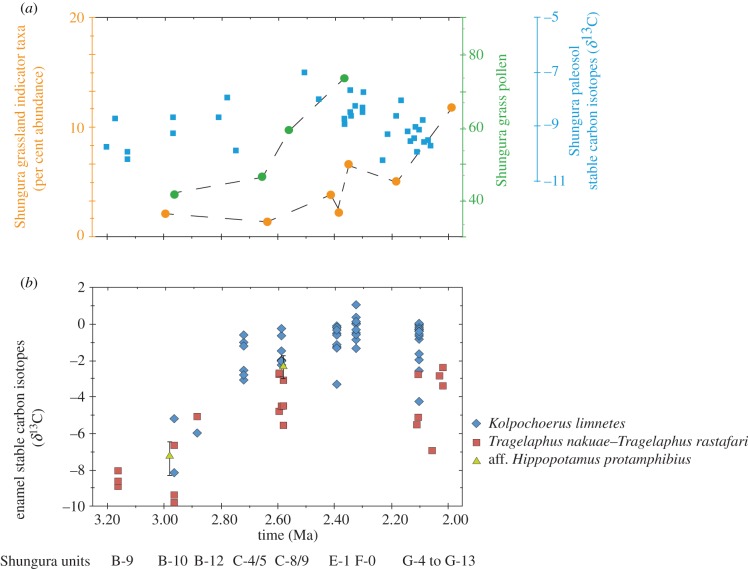Figure 2.
Local palaeoenvironmental indicators in the Shungura Formation from 3.2 to 2.0 Ma. (a) Palaeosol stable carbon isotopes [8], grass pollen percentages [9] and proportions of mammals indicative of secondary grassland habitats [10]. (b) Fossil enamel stable carbon isotopes show a large increase in enamel δ13C around 2.8 Ma indicating palaeodietary change. The δ13C increase, however, is not correlated with the expansion of grassland habitats and loss of tree cover, or with proportional increases in grazing mammals. Different ecological proxies, however, may be sampling different spatial and temporal scales.

